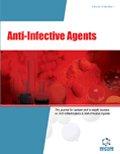Abstract
Neuroinflammation is a host defense mechanism involved in restoration of normal neural cell function. Most major CNS diseases are characterized by neuroinflammation. Following brain injury, microglial cells are activated and initiate a rapid response, which involves cell migration, proliferation, release of cytokines/ chemokines and trophic and/or toxic effects. Cytokines/chemokines mediate the stimulation of phospholipases A2 and cyclooxygenases. Stimulation of these enzymes results in breakdown of membrane glycerophospholipids with release of arachidonic acid and docosahexaenoic acid. Oxidation of arachidonic acid produces proinflammatory eicosanoids. Lyso-glycerophospholipids, the other products of reactions catalyzed by phospholipase A2, are converted to pro-inflammatory platelet-activating factor. Eicosanoids and platelet activating factor intensify neuroinflammation. Lipoxin, an oxidized product of arachidonic acid through 5-lipoxygenase, is involved in resolution of inflammation and is anti-inflammatory. Docosahexaenoic acid is metabolized to resolvins and neuroprotectins. These lipid mediators retard the generation of eicosanoids. Levels of eicosanoids are markedly increased in many neurological disorders. Docosahexaenoic acid and its oxidized products retard neuroinflammation by inhibiting transcription factor NF-κB, preventing cytokine secretion, blocking the synthesis of eicosanoids, and modulating leukocyte trafficking. Depending on its timing and magnitude in brain tissue, inflammation serves multiple purposes. It is involved in protection of uninjured neurons and removal of degenerating neuronal debris and also in assisting repair and recovery processes. The dietary ratio of arachidonic acid to docosahexaenoic acid modulates inflammation in acute neural trauma and neurodegenerative diseases. Increase in dietary intake of docosahexaenoic acid offers the possibility of counterbalancing the harmful effects of high levels of arachidonic acid-derived pro-inflammatory eicosanoids.






















